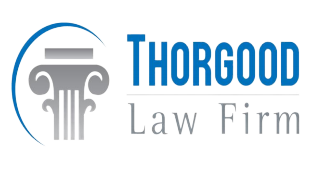
Yes, if your side gig qualifies as a genuine business (with a profit motive) and meets both federal and New York State rules for deducting losses. That means you must show that your expenses directly relate to an active, profit-seeking endeavor, and that these costs are not covered by insurance or reimbursed elsewhere.
At Thorgood Law Firm, our experienced tax attorneys have been helping New Yorkers navigate IRS and state tax rules for over 25 years. If you have questions about deducting side-gig losses or other tax issues, we’re here to help. Consult with our firm to get personalized guidance.
What is a “Side Gig Loss”?
A “side gig loss” happens when you spend more money on your part-time venture than you earn in a given year.
For instance, you might:
- Spend $2,000 on supplies and shipping
- Only make $1,500 in revenue
You now have a $500 loss. Such losses may lower your taxable income if they meet specific requirements. However, New York also follows many federal rules, so your deductions must generally be allowed at the IRS level first.
When Does a Side Hustle Count as a “Business”?
To deduct a net loss, the IRS and New York State need to see you’re running a business, not just pursuing a hobby.
A key test is profit motive:
- Do you regularly work to make money?
- Do you track income and expenses, advertise, and keep records?
If the answer is “yes,” you’re likely seen as a business. If it’s mostly for fun (even if you earn a little), then your deductions may be disallowed.
Pro Tip: If you consistently lose money and don’t show a profit in at least three out of five years, authorities may suspect it’s a hobby.
Why “Federal Income Tax Purposes” Matter
New York generally follows federal guidelines for business deductions. This means if a cost is not deductible on your federal return, you typically cannot deduct it on your New York return. Unincorporated businesses compute their losses similarly to how they do for the IRS, and then make state-specific adjustments.
Do I Have to Show a Profit Motive Every Single Year?
No. Businesses can have bad years. The IRS and New York State often examine whether you actually make money in at least three of five consecutive years. If you don’t, you may need extra proof that it’s a real business.
Examples:
- A marketing plan showing how you’re trying to boost sales
- Detailed records of costs and revenue
- Evidence that you changed strategies to become profitable
These details are vital if you’re ever audited.
What If My Side Gig Operates in More Than One State?
If you do some work in New York and some elsewhere, you must apportion your income and expenses. Under § 138.6 and § 132.12 of New York State’s administrative code, you only count the portion of your earnings and losses tied to New York for your New York taxable income.
- Residents: Generally, report all income but you can get credits or allocations for out-of-state work.
- Nonresidents: Only the New York–sourced portion of your gain or loss applies.
If you’re unsure how to split these amounts, a tax professional can help sort it out.
Net Operating Loss (NOL) From a Side Gig
A net operating loss (NOL) arises when your total deductions exceed your total income. If you legitimately qualify for an NOL at the federal level, you often can carry that loss forward to offset future taxable income. New York uses federal rules with some modifications, so you’d still calculate the NOL under IRS guidelines first.
Partnerships or LLCs: How Are Losses Handled?
Many side gigs are set up as partnerships, S-corporations, or LLCs that pass income and losses through to owners. If that’s your structure, you’ll typically receive a Schedule K-1 showing your share of business income or loss.
- Residents: You include this on your personal return.
- Nonresidents: You allocate only the portion of the loss tied to New York sources.
Again, the state only recognizes valid business losses, so you need to show you’re engaged in a genuine commercial endeavor.
Documenting Your Losses
Without proof, the IRS or New York State may deny your claim. Good records can include:
- Receipts and invoices (for materials, supplies, or advertising)
- Mileage logs (if you drive as part of your side gig)
- Bank statements (showing deposits and payments)
- Business plans or marketing materials
The clearer your paper trail, the easier it is to show your losses are real and directly tied to your business.
What Happens If Authorities Deny the Loss?
Tax agencies may say your side gig is actually a hobby or that your expenses weren’t valid. If they disallow the loss, you might owe extra tax, plus penalties and interest. In serious cases, they could also make you amend prior returns.
That’s when having legal counsel helps. Thorgood Law Firm has decades of experience handling these disputes. Our New York tax attorneys can check your records, gather profit-motive evidence, and represent you if you face an audit or appeal.
How Thorgood Law Firm Can Help Maximize Your Side Gig Loss Deductions
At Thorgood Law, our tax attorneys understand that side-gig tax laws in New York can be complicated. We provide:
- Record Review: Ensuring your losses are well-documented.
- Hobby vs. Business Clarity: Explaining how to prove a profit motive.
- Multi-State Guidance: Apportioning income if you operate in multiple locations.
- Audit Defense: We’ll stand by you if the IRS or New York audits or disputes your losses.






